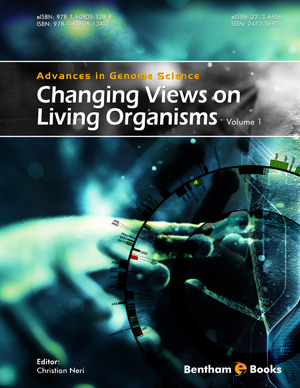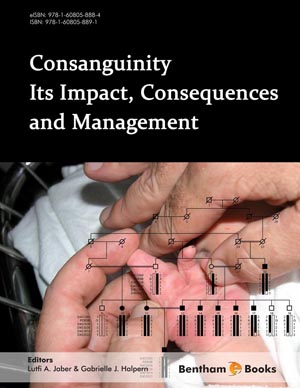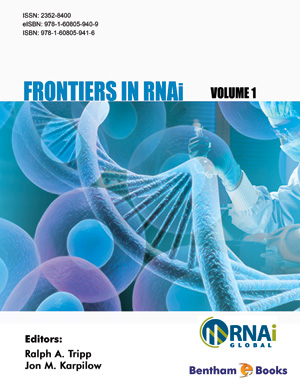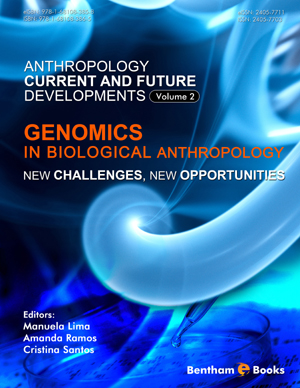List of Contributors
Page: xxx-xxx (1)
Author: Stephen N. Calculator
DOI: 10.2174/9781681081168115010005
Clinical Features, Medical Issues, and Diagnostic Testing in Angelman Syndrome
Page: 3-27 (25)
Author: Jennifer M. Mueller and Charles A. Williams
DOI: 10.2174/9781681081168115010006
PDF Price: $15
Abstract
This chapter reviews the clinical and medical aspects of Angelman syndrome (AS) and the genetic mechanisms that create a deficiency of the function of UBE3A on the maternally-derived number 15 chromosome. Genetic mechanisms causing AS include cytogenetic deletions, imprinting center defects, paternal uniparental disomy and UBE3A mutations. We review the clinical criteria for the diagnosis of AS and discuss genetic confirmatory testing. The chapter explores the natural history and characteristic features of AS including severe developmental delay, speech impairment, gait ataxia, microcephaly, seizures, and unique behaviors. Finally, we will discuss the implications for learning and overall function.
Learning Characteristics of Students with Angelman Syndrome and Related Instructional Strategies
Page: 27-74 (48)
Author: Erin S. Sheldon
DOI: 10.2174/9781681081168115010007
PDF Price: $15
Abstract
Angelman Syndrome (AS) is associated with a constellation of disabilities. Students with AS present in the classroom with complex communication needs, cognitive disabilities, and differences in how information received through the senses is perceived and integrated. These students also have significant strengths: strong social motivation, a desire to communicate and interact, a positive affect, and strong attention when instruction is socially interactive and personally meaningful. Understanding the nature of the learning differences in AS is essential to planning how to meet these student’s educational needs and successfully include them in academic instruction.
Broad Considerations Driving AAC and Related Instruction for Individuals With Angelman Syndrome
Page: 75-114 (40)
Author: Stephen N. Calculator
DOI: 10.2174/9781681081168115010008
PDF Price: $15
Abstract
Augmentative and Alternative Communication (AAC) and related assessment and intervention practices for individuals with AS might be best viewed as fluid, reciprocal processes that are important to the extent that they contribute to individuals’ patterns of participation and inclusion in valued events. This is true irrespective of etiology of AS, severity of challenges, or educational placement. Educators, speech-language pathologists, and others are encouraged to emphasize practices that foster individuals’ independence, autonomy, and quality of life. The use of standardized tests is questioned from this perspective. More viable, ecologically valid alternatives are presented. Several assessment and intervention procedures related to this construct are discussed.
Overview of Augmentative and Alternative Communication and Special Considerations for Individuals With Angelman Syndrome
Page: 115-130 (16)
Author: Stephen N. Calculator
DOI: 10.2174/9781681081168115010009
PDF Price: $15
Abstract
The primary purpose of this chapter is to provide readers an overview of augmentative and alternative communication (AAC) as a prelude to subsequent chapters exploring this topic in greater depth. Basic material pertaining to assessment and intervention practices and principles is presented. The chapter begins by differentiating the two applications of AAC as augmentations of or alternatives to individuals’ existing methods of communication. Information is provided regarding the impact of AAC systems on speech. Next, the four components of AAC systems; (a) symbols, both aided and unaided; (b) techniques, which include direct selection and scanning; (c) devices and other aided and unaided methods; and (d) strategies are reviewed. Educators and others are encouraged to address all four of these components when designing and implementing AAC programs that consider individuals’ current and future communication needs.
Fostering Communication Skills in Beginning Communicators
Page: 131-163 (33)
Author: Jeff Sigafoos, Vanessa A. Green, Robert Didden, Mark F. O`Reilly, Giulio E. Lancioni and Peter B. Marschik
DOI: 10.2174/9781681081168115010010
PDF Price: $15
Abstract
This chapter aims to describe communication assessment and intervention strategies for individuals with Angelman syndrome (AS) who are at the beginning stages of communication development. The chapter begins with a description of beginning communicators. This is followed by an overview of research that has investigated the forms and functions of pre-symbolic behavior (i.e., beginning communication skills) among individuals with AS. Assessment procedures for identifying pre-symbolic forms and functions are outlined. The final section describes intervention approaches for enhancing the effectiveness of pre-symbolic behavior and fostering the transition from pre-symbolic to symbolic communication.
Fostering Effective Communication in Individuals With Angelman Syndrome Who Rely on Symbolic Methods of Communication
Page: 164-191 (28)
Author: Stephen N. Calculator
DOI: 10.2174/9781681081168115010011
PDF Price: $15
Abstract
This chapter discusses principles as well as assessment and intervention strategies designed to foster effective communication skills in individuals with Angelman Syndrome who rely on both pre-symbolic and symbolic methods of communication. Both unaided and aided methods of augmentative and alternative communication are considered. By virtue of the nature of their disabilities, coupled with recent research findings, all individuals with AS are not only deemed candidates for AAC but also potential users of high-tech AAC devices. A review of best practices related to providing AAC services to individuals with AS is presented along with information pertaining to parents' corresponding priorities.
Enhanced Natural Gestures: A Self-Administered Program for Teaching Communicative Behaviors to Individuals with Angelman Syndrome
Page: 192-216 (25)
Author: Stephen N. Calculator
DOI: 10.2174/9781681081168115010012
PDF Price: $15
Abstract
The ultimate goal of this chapter is to provide parents, speech-language pathologists, educators, personal care assistants, and others with a sufficient orientation to Enhanced Natural Gestures (ENGs) to enable them to administer the program on their own. ENGs are intended to serve as one component of a broad augmentative and alternative communication (AAC) system that includes multiple modes of communication. ENGs consist of intentional behaviors that individuals are already using or can be easily taught given their existing cognitive, language, and motor skills. Unlike other gestural systems, including sign languages, ENGs are easily acquired by individuals with AS and readily understood by a broad range of communication partners. ENGs often differ from one individual to the next. Readers are acquainted with the two primary methods for teaching ENGs: Mand-Model with Time Delay (MMT) and Molding-Shaping. These techniques take advantage of naturally arising opportunities for communication that occur at school, home, and other settings.
Application of Principles of Applied Behavior Analysis in Addressing Challenging Behaviors of Individuals with Angelman Syndrome
Page: 217-243 (27)
Author: Jane Summers
DOI: 10.2174/9781681081168115010013
PDF Price: $15
Abstract
This chapter provides an overview of challenging behavior in children and adults with Angelman syndrome and outlines possible reasons regarding how and why it may develop. Approaches to address challenging behavior that are based on the principles of applied behavior analysis are presented, along with ways to replace challenging behavior with socially acceptable skills. Case examples are used to illustrate assessment and intervention procedures, with a focus on prevention of challenging behavior and functional communication training.
Comprehensive Literacy Instruction for Students with Angelman Syndrome
Page: 244-287 (44)
Author: Erin S. Sheldon and Caroline Ramsey Musselwhite
DOI: 10.2174/9781681081168115010014
PDF Price: $15
Abstract
Most students with Angelman syndrome (AS) are at an emergent level of language and literacy development. Students with AS require the same comprehensive literacy instruction as their peers with typical development, but they need specific adaptations, supports, and opportunities in order to access that instruction. Comprehensive emergent literacy instruction engages students with AS in using symbolic language for authentic purposes: to comprehend and respond to the stories of others and to express their own ideas and individuality. This comprehensive instruction develops observable skills and understandings in the areas of vocabulary, reading comprehension, reading fluency, phonemic and phonetic awareness, and writing.
The Role of AAC In Fostering Inclusion of Adults with Angelman Syndrome in Post-School, Home and Community Settings
Page: 288-321 (34)
Author: Teresa Iacono and Hilary Johnson
DOI: 10.2174/9781681081168115010015
PDF Price: $15
Abstract
The communication of adults with severe intellectual disability is difficult to characterize. The literature suggests their skills fall into stages of pre-symbolic to symbolic or even basic linguistic skills. Recent research, however, suggests a more complex picture of combining pre-symbolic and symbolic forms used within strategies that vary according to social relationships. In this chapter, the communication characteristics of people with severe intellectual disabilities are explored according to the research literature, with a focus on social interaction processes that value the person’s extant skills. With this literature as a background, the use of AAC to enhance inclusion of people with severe intellectual disability, and in particular adults with Angelman Syndrome, across settings, such as community, home and day service, and work will be explored.
Introduction
Individuals with Angelman Syndrome (AS) present many unique challenges to professionals, parents and others who are committed to maximizing individuals’ competence while ensuring them the best possible quality of life. Angelman Syndrome: Communication, Educational, and Related Considerations is a unique, exhaustive compilation of existing material related to understanding the nature of AS and how individuals’ communication and related skills can be fostered most effectively. It provides readers with a comprehensive understanding of the background of Angelman Syndrome along with an in-depth exploration of communication (with a focus on augmentative and alternative communication), educational, and related issues that should be addressed when attempting to meet the needs of individuals with AS at home, school, work, and elsewhere in the community. Key features of the book include: • Extensive background information about medical and related factors behind AS and how they influence individuals’ learning • A series of prologues written by the parents of individuals with AS • Contributions from internationally recognized experts on AS, communication disorders, psychology and education • Numerous practical, evidence-based strategies for conducting assessments and carrying out interventions among AS affected individuals Speech-language pathologists, allied healthcare providers and educators providing support to affected individuals should benefit from the information provided in the book by being able to identify appropriate communication, behavioral and educational goals. Laypersons, particularly parents, will also find the information highly useful in advocating for best practices for their children (which is partly fostered by the series of parental prologues). Angelman Syndrome: Communication, Educational, and Related Considerations will not only serve as a valuable reference for improving the learning experience for AS affected individuals but will also embolden both professionals and parents to maintain higher expectations for them.


















